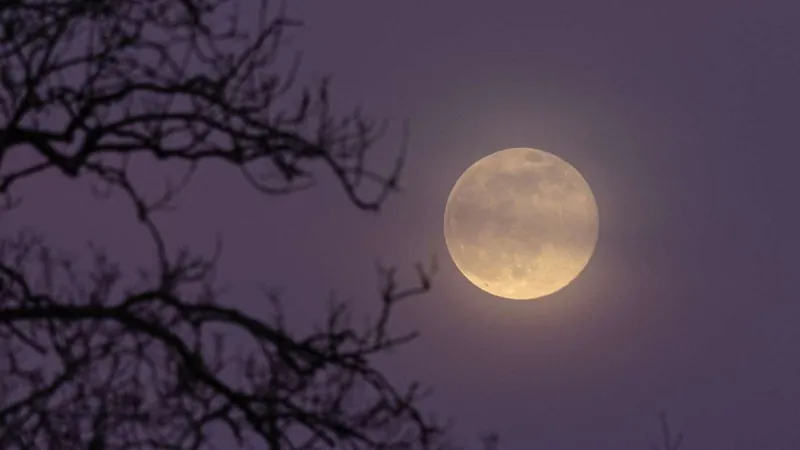
Unlock the Mystery of April’s Micromoon: What You Need to Know!
2025-04-12
Author: Ying
Prepare for April's Celestial Show!
Get ready, sky enthusiasts! This April, the full moon is what astronomers call a 'micromoon', and it’s set to rise in the evening, peaking at 6:22 PM MT. While many expect the 'pink moon' to glow with vibrant hues, this month's display will dazzle with a white-golden sheen instead.
What Exactly is a Micromoon?
So, what’s the deal with the micromoon? According to NASA expert Dr. Noah Petro, this phenomenon occurs when the moon reaches its apogee—the farthest point in its orbit from Earth. Basically, the moon’s orbit isn’t perfectly circular; it resembles an elliptical shape, meaning it can be closer or farther away depending on the time of year.
April's micromoon is expected to be the smallest of three within 2025, a fascinating feature that distinguishes it from the much larger supermoon coming in November.
How to Get the Best View!
To catch this cosmic event at its finest, NASA suggests grabbing binoculars or a telescope and heading to a location with minimal light pollution—perfect conditions will help unleash the moon’s subtle beauty!
Micromoon vs. Supermoon: The Unseen Difference!
At its peak, April's full moon will be roughly 30,000 miles farther than the supermoon in November. Despite looking up to 14% smaller and 30% dimmer than its super counterpart, casual observers might find it hard to spot the differences—unless you’re examining photographic evidence.
The Legend of the Pink Moon!
But why do they call it the 'pink moon' if it’s not… pink? The name is a lovely nod to the vibrant blooming flowers of spring, particularly the stunning hot pink wildflower, Phlox subulata, which blankets the Eastern U.S. this time of year. Several Native American tribes also commemorate this season of renewal, calling their version of it the flower moon or the budding moon.
Significance Beyond Astronomy!
This moon carries religious weight too! The first full moon post-spring equinox is known as the Paschal moon and is key in determining the date of Easter in Christianity.
Mark Your Calendars for More Full Moons!
After this pink spectacle, keep your eyes peeled for more full moons in 2025 including the Flower Moon in May and the Supermoons in October, November, and December.
Catch Upcoming Meteor Showers!
The sky is full of wonders! Here are some meteor showers to watch for this year: Lyrids (April 21-22), Perseids (Aug. 12-13), and Geminids (Dec. 12-13), each offering a spectacular light show.
Eclipses on the Horizon!
Don’t miss the upcoming celestial events! A total lunar eclipse on September 7-8 and a partial solar eclipse on September 21 will offer breathtaking views, showcasing how the universe aligns.
So, grab your binoculars and mark your calendars—April’s micromoon and more grandeur await!



 Brasil (PT)
Brasil (PT)
 Canada (EN)
Canada (EN)
 Chile (ES)
Chile (ES)
 Česko (CS)
Česko (CS)
 대한민국 (KO)
대한민국 (KO)
 España (ES)
España (ES)
 France (FR)
France (FR)
 Hong Kong (EN)
Hong Kong (EN)
 Italia (IT)
Italia (IT)
 日本 (JA)
日本 (JA)
 Magyarország (HU)
Magyarország (HU)
 Norge (NO)
Norge (NO)
 Polska (PL)
Polska (PL)
 Schweiz (DE)
Schweiz (DE)
 Singapore (EN)
Singapore (EN)
 Sverige (SV)
Sverige (SV)
 Suomi (FI)
Suomi (FI)
 Türkiye (TR)
Türkiye (TR)
 الإمارات العربية المتحدة (AR)
الإمارات العربية المتحدة (AR)